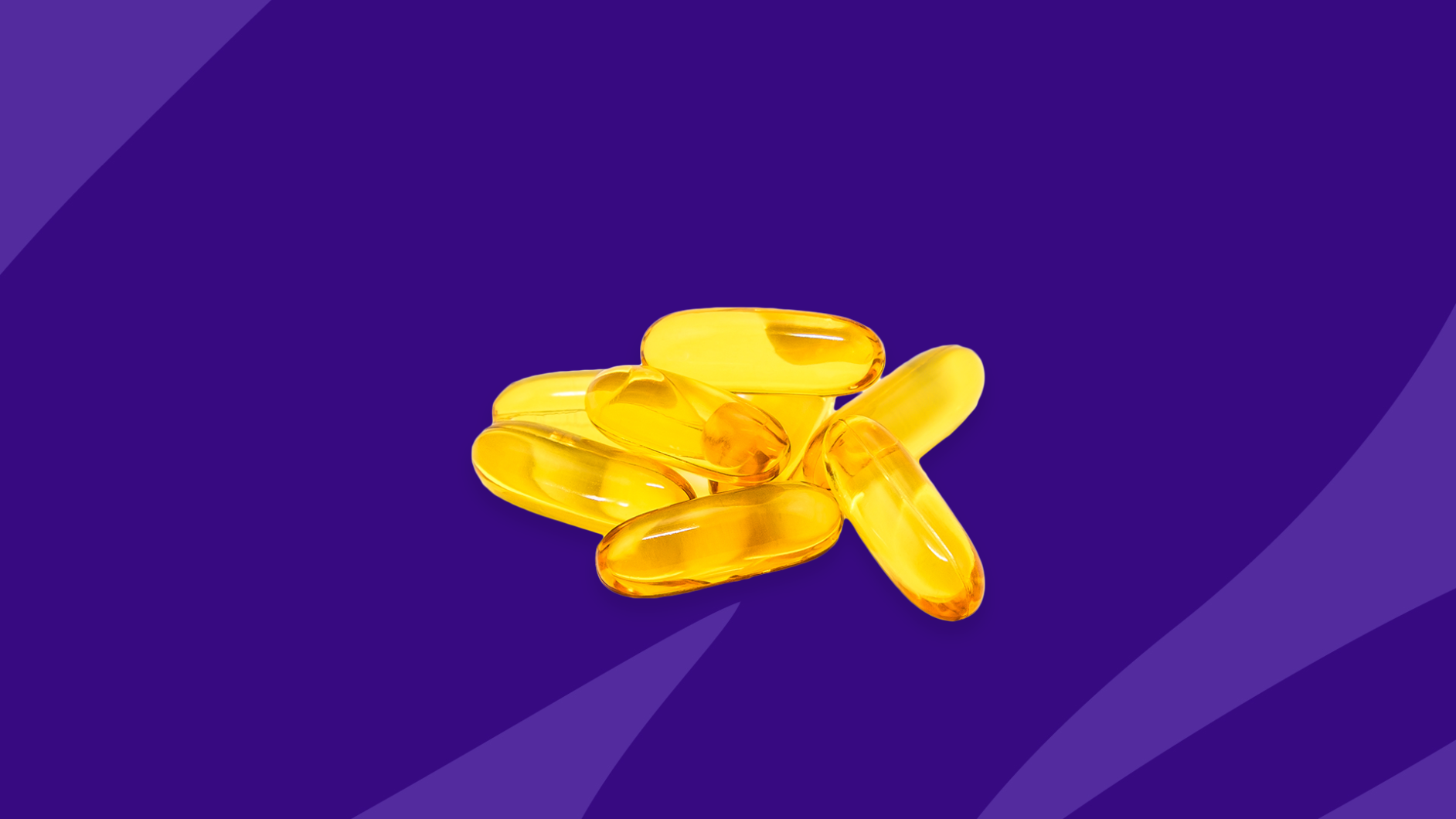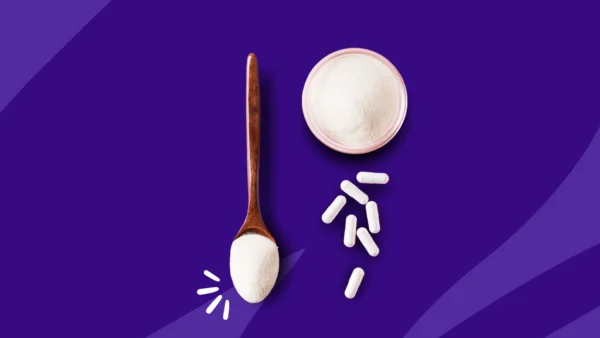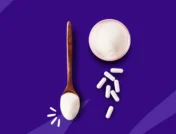Millions of people start their day the same way. They take a vitamin—or maybe several—each with a single mineral or a specific mix. A daily multivitamin is often recommended by healthcare professionals, but when it comes to supplements, more is not always better. For example, too much vitamin D can lead to toxicity—and that can cause some serious health problems.
Can you take too much vitamin D?
It’s possible to take too much vitamin D, also known as calciferol. It is a fat-soluble vitamin, like vitamins A, E, and K. That means it’s best absorbed when taken along with fats such as olive oil or nuts. It also means that vitamin D levels build up in the blood because it is stored in body fat and in the liver until your body uses it (unlike with water-soluble vitamins where excess amounts are flushed out in your urine). When the supplement is taken in too-high doses, it can build up in your fatty tissues and increase the risk of unpleasant side effects. In severe cases, it can cause vitamin D toxicity, also known as hypervitaminosis D.
Although vitamin D toxicity is not common, it can be serious when it occurs. “Most people in the United States and worldwide actually have less than recommended levels of vitamin D, so toxicity isn’t something that happens frequently,” says Roxana Ehsani, RDN, a dietitian based in Miami, Florida. Even though it is rare, when vitamin D toxicity occurs, it can cause problems. Excess vitamin D causes a greater amount of calcium to be absorbed in the intestines, which leads to high levels of calcium in the blood (also known as hypercalcemia). “The buildup of calcium in the blood, in turn, causes the symptoms of toxicity,” Ehsani says.
When vitamin D toxicity occurs, it doesn’t occur from diet: It usually happens because a person is taking too much of a vitamin D dietary supplement over a long period of time. Joe Moose, Pharm.D., owner of Moose Pharmacies of North Carolina, says patients should get medical advice from their pharmacist or healthcare provider before starting supplements.
How much vitamin D should you take?
The amount of vitamin D a person needs varies by age, overall health, and any special health conditions, such as being pregnant or breastfeeding. While it’s always a good idea to check with your healthcare provider, you can start with the following guidelines:
- An average person who does not have low blood levels of vitamin D should take 600 international units (IU) of vitamin D per day.
- Menopausal women and people older than 70 may require more—up to 800 IU of vitamin D.
- Pregnant or breastfeeding women generally need to take higher amounts of vitamin D, from a minumum of 600 IU daily up to 1,000 to 2,000 IU daily.
- Individuals with certain health conditions that interfere with vitamin D absorption, such as celiac disease or cystic fibrosis, also require additional vitamin D.
- People with osteoporosis may need to take up to 10,000 IU of vitamin D daily.
Some drugs interfere with how vitamin D is absorbed, so always tell your provider and pharmacist all of the medications you are taking—even when discussing over-the-counter supplements.
RELATD: Vitamin D vs. Vitamin D3 | When would I need a prescription for vitamin D?
What is a toxic level of vitamin D?
Vitamin D toxicity is diagnosed with a blood test that checks levels of vitamin D and calcium. The results are reported in either nanomole per liter (nmol/L) or nanograms per milliliter (ng/mL).
Vitamin D levels greater than 125 nmol/L (50 ng/mL) are considered too high and could lead to health problems. Hypercalcemia from vitamin D toxicity is indicated by levels of vitamin D in the blood that are greater than 375 nmol/L (150 ng/mL).
Symptoms of too much vitamin D
According to the National Institutes of Health, the symptoms of too much vitamin D include:
- Nausea
- Vomiting
- Muscle weakness
- Loss of appetite
- Confusion
- Frequent urination
- Dehydration and excess thirst
- Kidney stones or kidney damage
Extremely high doses of vitamin D over a long period of time can lead to the build up of excess calcium in soft tissue in the body, including in the arteries and valves of the heart, as well as kidney stones that can block the urinary tract. Severe vitamin D toxicity can lead to kidney failure, irregular heartbeat, or even death.
The best treatment for vitamin D toxicity is to immediately stop taking any vitamin D or calcium supplements and to eat fewer foods that are rich in vitamin D and calcium. Continue doing this until your blood levels of vitamin D and calcium return to a normal range. If you are dehydrated, you may also need IV fluids. In a severe case of vitamin D toxicity, a healthcare provider may prescribe medications, such as a corticosteroid and a bisphosphonate. People with severe kidney damage may require hemodialysis.
Vitamin D supplement safety
Vitamin D is essential for many important bodily functions, including fostering bone health, maintaining blood pressure, regulating your immune system, and even stabilizing your mood. When you are very vitamin D and calcium deficient, it can lead to health conditions like osteopenia (bone loss), osteoporosis (bones become weak and fragile), osteomalacia (bone softening). It can also lead to rickets, a softening and weakening of bones in children. When your provider recommends that you take a vitamin D supplement, follow these tips to make sure you don’t consume too much:
- Take the dosage recommended by your provider. “To avoid toxicity, you should consult with your physician before taking a vitamin D supplement—or any supplement for that matter,” says Johna Burdeos, a registered dietitian based in Houston, Texas.
- Choose a reputable brand of supplement. “The supplement industry is not tightly regulated by the FDA like medications and foods are,” Burdeos says. “As such, the onus falls completely on the consumer to vet supplement products.” Too-high dosages can come from poorly regulated supplements that contain more vitamin D than indicated on the label. When in doubt, check with your pharmacist or healthcare provider.
- Monitor your vitamin D intake from foods such as cod liver oil, trout, fatty fish like salmon, tuna, sardines, mackerel, and some white mushrooms. Foods with small amounts of vitamin D include eggs, cheese, beef liver, and portobello mushrooms.
- Be conscious of foods with added vitamin D. Cow’s milk, soy milk, almond milk, and oat milk are often fortified with vitamin D—usually about 3 mcg (120 IU) per cup. Many ready-to-eat breakfast cereals are fortified as well. Infant formula is also fortified with vitamin D. Fortified foods provide most of the vitamin D that Americans get in their diet.
- Don’t forget about sun exposure. Spending 10 to 20 minutes each day in the sun without sunscreen will produce between 1,000 and 10,000 IUs of vitamin D, depending on the pigment of your skin and how much skin is exposed. Although the body makes vitamin D when the skin is exposed to sunlight, experts do not believe that vitamin D toxicity can occur due to too much sun exposure.
The bottom line is you should consult with your provider or pharmacist to make sure you’re getting enough vitamin D, but not too much—from supplements, diet, and the sun.











